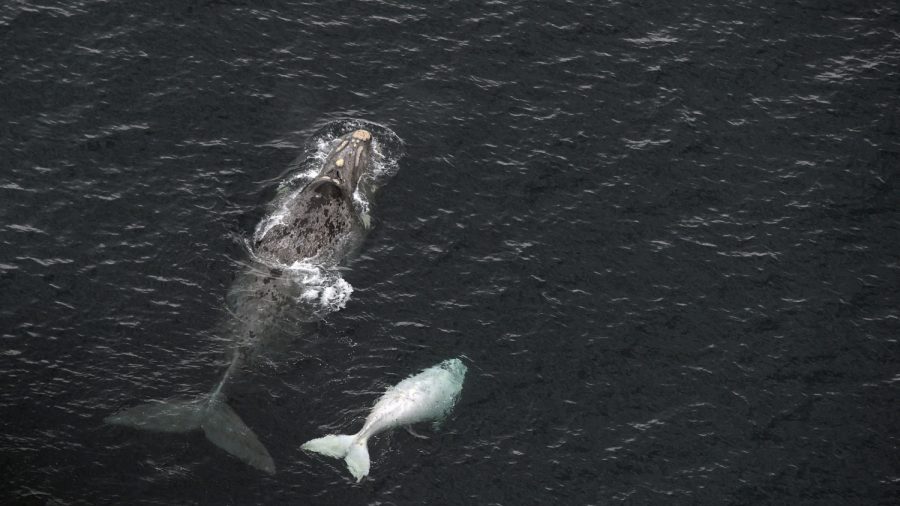DAYTONA BEACH, Fla.—Seven rare right whale calves have been spotted so far this winter off Florida’s Atlantic coast.
Researchers say each new calf spotted this year is an encouraging sign for the critically endangered whales. No newborns were spotted during the last calving season, and just five calves were counted during the previous year.
Beautiful. A rare right whale and calf were spotted off the Brevard County coast this afternoon: https://t.co/sP2SPh2HcG pic.twitter.com/5rMeHcEaNI
— WESH 2 News (@WESH) February 18, 2019

But Katie Jackson of the Florida Fish and Wildlife Conservation Commission tells The Daytona Beach News-Journal that seven calves “still isn’t enough.” The wildlife biologist says right whales need to deliver 16 to 18 calves a year just to maintain their current population.
Scientists estimate only about 450 North Atlantic right whales remain.
Right whales typically migrate from the North Atlantic to give birth off the coasts of Georgia and Florida from December through March.

Right whale calf sighted off Georgia coast: Expect to see female North Atlantic right whales in the water off th… http://t.co/RdwfM05w
— Whale News (@whalenews) December 24, 2011
7 dead whales reported on Kodiak Island in 2018
KODIAK, Alaska—Seven dead whales washed ashore on Kodiak Island in 2018, according to officials with the National Oceanic and Atmospheric Administration.
The cause of death for two of the whales appeared to be predation, and blunt trauma for another two whales, including a fin whale that struck a state ferry, the Kodiak Daily Mirror reported.
The cause of death for the other three whales was not determined.
7 dead whales reported on Kodiak Island in 2018 https://t.co/x7oOiHkIWu pic.twitter.com/gup00vYuV0
— The Vancouver Sun (@VancouverSun) February 17, 2019

Four of the animals were gray whales, NOAA officials said.
Altogether, 18 dead whales were reported across the Gulf of Alaska last year.
That is far short of the 49 deceased whales reported in the region in 2015.
The cause of that event remains unknown, but scientists have tied it to unusually warm waters in the gulf during that period.
The first of last year’s Kodiak strandings was reported June 25 to the Alaska Region Marine Mammal Stranding Network.
In that case, a Kodiak resident reported that the body of a gray whale calf had landed on a beach near Pasagshak Bay. The animal’s tongue was missing, indicating it might have been a victim of a killer whale.
7 dead whales reported on Kodiak Island in 2018 https://t.co/yNdhfpHETM
— Seattle Informer (@seattleinformer) February 17, 2019
A report of an adult gray whale washing up on another beach near Pasagshak followed June 28, with results of a necropsy suggesting blunt trauma as a possible cause of death. In early July, the body of a severely emaciated adult gray whale stranding was reported in another bay.
A fourth dead gray whale washed ashore in Pasagshak Bay, with that stranding reported In early August. The head and jaws were missing, indicating it was likely killed by a killer whale.


